CHINA
Recently, the Supreme People’s Court (SPC) issued new provisions on the jurisdiction of IP litigation cases, making the jurisdiction of such cases even more complicated. This provision does not comprehensively sort out the jurisdiction provisions of all IP litigation cases, but only amends other historical provisions. Therefore, reading this provision alone may not be sufficient for a clear understanding of the specific jurisdiction of each type of case, and it needs to be interpreted in combination with historical provisions.
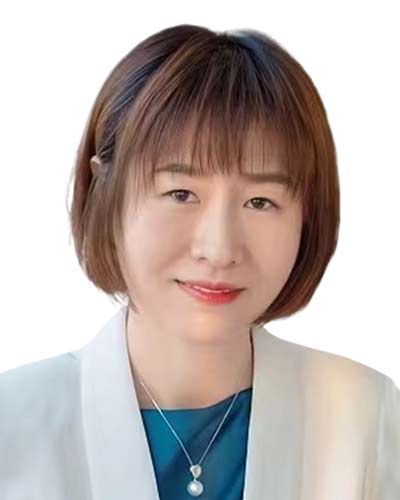
Counsel
CCPIT Patent and Trademark Law Office, Beijing
Tel:+86-10-66046479
Email: yuany@ccpit-patent.com.cn
In April, the SPC issued the Provision on the Jurisdiction of Intellectual Property Civil and Administrative Cases of First Instance, and the Notice on Printing and Distributing the Standards for the Jurisdiction of Primary People’s Courts Over Intellectual Property Civil and Administrative Cases of First Instance, which came into force on 1 May. This article focuses on the changes in the jurisdiction of patent cases.
Article 1 of the provision defines seven types of special cases: ownership and infringement disputes on invention patents; utility model patents; new plant varieties; integrated circuit layout design; technical secrets; computer software; and monopoly disputes. Civil and administrative cases of the first instance in these seven types of cases shall be under the jurisdiction of the IP courts, the intermediate courts in the place where the government of a province, autonomous region or municipality directly under the central government is located, and the intermediate courts designated by the SPC. Where laws have provisions on the jurisdiction of IP courts, such provisions shall prevail.
In fact, before the implementation of the provision, the jurisdiction of these seven types of cases was substantially the same as that described in the provision, except that several primary courts had jurisdiction over patent disputes for a short time. The change is that before the implementation of the provision, ownership and infringement disputes of design patents and IP contract disputes also had the same jurisdiction distribution as the seven types of cases. After the implementation of the provision, they have been spread to other intermediate courts or to the jurisdiction of primary courts.
This is in response to the requirements of the central government for further improving the functions of intermediate courts and primary courts in the Reform Plan on Improving the Positioning of Trial Level Functions of Four-Level Courts, launched by the SPC in September last year.
Specifically, in article 2 of the provision, the first instance civil and administrative cases of ownership and infringement disputes of design patents are spread to all intermediate courts, in addition to the IP courts. Therefore, in the future – except in Beijing, Shanghai, Guangdong and Hainan, which already have IP courts – intermediate courts in other regions can have jurisdiction over civil and administrative cases of design patent of the first instance.
The provision also stipulates that with the approval of the SPC the primary courts may have jurisdiction over civil cases of the first instance involving design patents. Although it is not known which primary courts will be approved, we predict that the first batch of approved primary courts will likely include the Haidian District Court in Beijing.
The Beijing IP Court has undertaken a large number of administrative lawsuits related to appeals from re-examination decisions and/or invalidation decisions of IP rights, and the number of cases is far greater than that of other IP courts and tribunals, therefore, there is an urgent need to descend some cases to the primary courts. Second, the Haidian District Court was approved by the SPC in 2011 as a pilot court to hear utility model and design patent disputes, however, this ended with the establishment of the Beijing IP Court in 2014. Therefore, Haidian District Court has the ability to hear civil cases relating to design patents, but whether this can be realised remains to be seen.
Article 3 of the provision points out that the first instance of IP civil and administrative cases other than those specified in articles 1 and 2 shall be under the jurisdiction of the primary courts determined by the SPC. Patent cases other than those specified in articles 1 and 2 mainly include contract disputes. Previously, patent contract disputes also needed centralised jurisdiction, but now these cases will be under the jurisdiction of the designated primary courts. The local primary courts determined by the SPC, as stipulated in this article, will be listed in detail in the supporting notice.
It should be noted that, in addition to Beijing and Shanghai, the primary courts in other regions have a ceiling on the number of litigation objects in the jurisdiction of such cases. As different regions have different standards, it is advisable to refer to the notice for details. Cases that exceed the ceilings, as well as those involving administrative acts of departments of the State Council, local governments at or above the county level, or the customs, shall be under the jurisdiction of the intermediate courts in accordance with article 2.2 of the provision.
The provision did not mention the standard for the high courts in various regions to exercise jurisdiction over IP cases of the first instance, because the standard has been determined in relevant provisions issued in 2017. According to the 2017 provisions – and in combination with the fact that the contract dispute cases involving invention patents and other contract disputes specified in the provision are under the jurisdiction of the primary courts – the specific standards for the high courts to have jurisdiction over the first instance IP civil and administrative cases are as follows:
- IP civil cases of the first instance that have a significant impact in their respective jurisdictions, and major and complex IP administrative cases of the first instance;
- The “seven types of cases” of the first instance with the amount of litigation object being more than RMB200 million (USD30 million) or more than RMB100 million while involving foreign affairs, Hong Kong, Macau and Taiwan, or parties not within its jurisdiction; and
- Other common IP civil cases with the amount of litigation object being more than RMB5 billion.
From the above-mentioned analysis, it can be seen that in terms of patent cases, the main change of the latest jurisdiction provisions compared with the previous ones is to spread the ownership and infringement disputes of design patents to more intermediate courts, and to move contract dispute cases into the jurisdiction of primary courts.
FURTHER DISCUSSION
What is the impact of this change on the courts that previously had centralised jurisdiction? Will the trial cycle of these courts be greatly shortened after the number of cases is reduced?
As far as the current situation is concerned, the provision may have a positive impact on the intermediate courts in reducing their caseloads. However, the impact on the IP courts is not significant because the ownership and infringement disputes of design patents are still under their jurisdiction, and only contract cases, which are a small proportion of total cases, are reduced.
According to the white paper on Judicial Protection of Intellectual Property in Shanghai Intellectual Property Court (2021), issued by the Shanghai IP Court, the total number of cases accepted that year was 5,432, including 572 contract cases that accounted for 10.5%. For the Beijing IP Court, the impact of jurisdiction changes was even less.
In 2021, the total number of cases accepted was nearly 30,000, and only about 500 of them were contract cases, accounting for about 1.7%. So, descending contract cases to primary courts will not substantially affect the caseload of each IP property court.

CCPIT PATENT AND TRADEMARK
LAW OFFICE
10/F, Ocean Plaza, 158 Fuxingmennei Street
Beijing 100031, China
Tel: +86 10 6641 2345
Email: mail@ccpit-patent.com.cn
INDIA
India has been attracting global attention with its evolving IP ecosystem. This article captures some important patent provisions and recent patent-related updates from the country.
FOREIGN FILING LICENCE

Founder Partner
LexOrbis, New Delhi
Tel: +91 98 1116 1518
Email: manisha@lexorbis.com
India’s patent law has a provision for a foreign filing licence (FFL), which needs to be obtained in advance. There are two options for following this provision, which have criminal penalties for non-compliance. The first choice is that the Indian resident inventor, before filing the first application outside the country, applies to the Indian Patent Office (IPO) by submitting a brief disclosure of the invention. Within three weeks of such a request, the IPO issues the FFL to the Indian resident inventor subject to scrutiny that the disclosure does not pertain to defence technology or atomic energy. After obtaining the FFL, the first patent application can be filed outside the country, naming the Indian resident inventor.
The second choice is that, instead of obtaining the FFL from the IPO, the applicant files the first application in India, naming the resident inventor. If there is no objection from the IPO within six weeks, the applicant can file applications outside India. If the IPO has any objection to the filing of applications outside India, it may issue secrecy directions to that effect to the applicant. However, this power has rarely been exercised by the IPO.
PATENT FILING AND AMENDMENTS
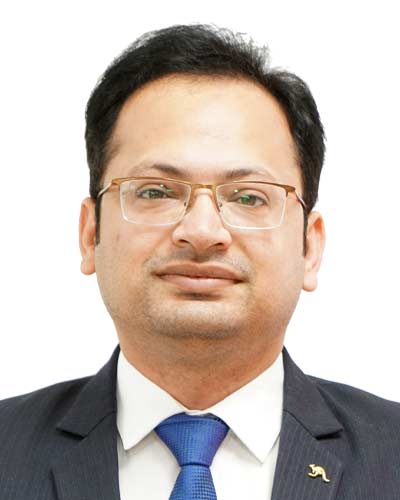
Partner
LexOrbis, New Delhi
Tel: + 91 97 1126 2818
Email: joginder@lexorbis.com
The IPO accepts the English language, which means no translation in native languages is needed for filing and processing patent applications in India. This leads to a significant reduction in the overall cost of patenting compared to jurisdictions that require native-language translations. The official fees of patent filing are also far lower than most patent offices across the globe.
India is a member of the Paris Convention and an application taking priority from one or more foreign applications can be filed in India within 12 months from the date of earliest filing. Indian patent law also allows a 31-month period to file a national phase application, based on the international patent co-operation treaty (PCT) compared with the 30 months provided by most jurisdictions.
There is a provision that allows applicants to drop some claims at the time of national phase entry, which can be used to save excess claim fees and/or expedite the prosecution by deleting claims directed towards a non-patentable subject matter in India. Once the application is filed, amendments can be done by way of a disclaimer, explanation, or correction only. All amendments need to be supported in the specification, and claims cannot be broadened once filed.
PROSECUTION PROCEEDINGS
The patent prosecution process in India begins with the request for examination. Most of the backlog has been cleared, and applications are now getting examined in less than a year from the date of request. The applicant gets six months to respond to the first examination report. If all objections are successfully overcome, a patent is directly granted.
Otherwise, an oral hearing takes place to allow the applicant to address outstanding objections, and a decision is later issued. In the case of an unfavourable decision, the applicant has two remedies: the first is to file a review petition before the patent office, and the second is to file an appeal before a high court.
DIVISIONAL APPLICATIONS
A divisional application can be filed any time before the grant or refusal of its parent application. Since there is no advance notice of any decision on a patent application, the divisional application should be filed at the earliest opportunity. The divisional application is considered valid only when there are multiple inventions disclosed in the parent application, and the claims of the divisional application are distinct from the claims of the parent application.
The independent claims of divisional applications should preferably have at least one novel and inventive feature that was not claimed in the parent application. The claims should also be supported in the description of the parent application. The divisional application can be filed either voluntarily or in response to a lack of unity objection from the IPO, which means the inventions must be so closely related to each other as to form one common concept.
The current position on the maintainability of voluntary divisional applications in India is a bit complex compared with most other jurisdictions. According to the recent Boehringer v Controller of Patents DHC (2022) case, the claims of the divisional application must be derived from the claims of the parent application. This is a restrictive interpretation of laws relating to a divisional application.
However, applicants may consider introducing the claims meant for a divisional application in the parent application. Delhi High Court recently held that as long as the invention is disclosed in the specification, and the claims are being restricted to the disclosures already made in the specification, the amendment ought not to be rejected, especially at the stage of examination before grant, as in Nippon A&L v the Controller of Patents (2022).
If those claims get accepted in the parent application, that should be good enough for the applicant. Otherwise, the parent application will receive an objection for lack of unity, or newly added subject matter. Such an objection supplies a legitimate ground for the applicant to pursue the objected claims through a divisional application, as can be seen in Milliken & Company v Union of India (2016).
DISCLOSURE OF FOREIGN APPLICATIONS
This legal requirement can be divided into two parts. The first part is known as the section 8(1) requirement, under which the applicant needs to give a list of all the corresponding applications filed anywhere outside India voluntarily, and also when asked. The corresponding applications include any applications originating from a common priority or PCT application, all PCT national phases, continuation, continuation in part, and divisional applications in the same patent family. Necessary details about the corresponding applications must be filed on form 3 at the time of filing of the Indian patent application and/or six months after that. If any new corresponding application is filed anywhere outside India, the details of that application must be provided to the IPO on form 3 within six months.
The second part, under section 8(2), relates to supplying copies of the search or examination reports and the granted claims in corresponding applications to the IPO, only when demanded. Since the IPO has now joined as a provider and accessing office to the World Intellectual Property Organisation’s centralised access to search and examination system, the controllers now have the facility to access the search and examination reports of the corresponding application through the system and, therefore, the demand made for such documents by the controller decreases.
WORKING STATEMENT
Another unique provision in Indian patent law is the requirement of a working statement. The government has introduced a few changes in the format and procedures involved with the filing of working statements for patents. The requirement for supplying the “quantum” of patented products manufactured and/or imported into India has been removed in the new form 27. There is no requirement of supplying the details of licences issued in any given financial year in the working statement.
The requirement of ascertaining and telling whether the “reasonable requirement of the public” in India has been met by the patented product has also been deleted from form 27.
The due date for filing the annual working statement has been changed from 31 March to 30 September each year. The period of working to be covered under the working statement has been replaced from calendar year (January to December) to financial year (April to March). No working statement must be filed for the financial year in which the patent is granted.
One working statement can be filed in respect of multiple related patents, where the approximate revenue or value gained from a particular patented invention cannot be derived separately from the approximate revenue or value accrued from related patents, and all such patents are granted to the same patentees. Co-owners of a patent can jointly file one working statement in respect of one or related patents, however, each licensee needs to file the statements separately.
IP DIVISION IN HIGH COURTS
Last year, the Indian government abolished the Intellectual Property Appellate Board (IPAB), the appellate authority, which heard appeals arising from the decisions of the patent, trademark and copyright offices and cancellation, revocation, or nullity actions. After that, Delhi High Court announced the creation of an IP division for handling all IP rights matters (including those that are to be transferred from the IPAB), and notified the IP Division Rules and the Rules Governing Patent Suits. Other high courts may also follow the initiative and set up IP divisions, as well as notify required rules.

LexOrbis
709/710 Tolstoy House
15-17 Tolstoy Marg
New Delhi – 110 001
India
Tel: +91 11 2371 6565
Email: mail@lexorbis.com
JAPAN
In the US, third-party opinions can be submitted as amicus curiae briefs, which have been actively used. In contrast, Japan did not have a statutory system for soliciting third-party opinions in litigation until April this year, when a number of legal amendments that institutionalised amicus curiae practice for patent and utility model infringement cases went into effect.
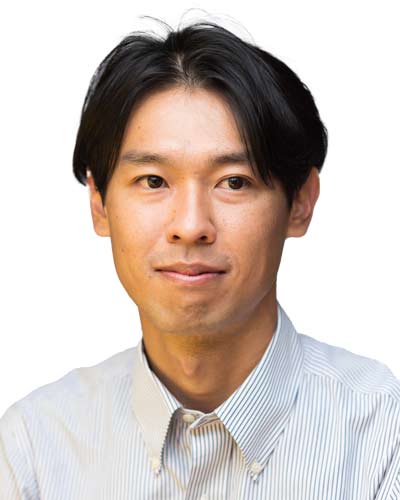
Attorney at Law
Ohno & Partners, Tokyo
Tel: +81 3 5218 2339
Email: tadah@oslaw.org
In patent infringement lawsuits, judgments granted on specific disputes between parties may affect many third parties. For example, technologies such as the internet of things and artificial intelligence have been rapidly developing, and these technologies are utilised across multiple industries. Court decisions on such technologies will inevitably affect many industries. In addition, a decision on standard essential patents has a significant impact on other countries. In such cases, it is appropriate for the court to solicit opinions widely from third parties and make a decision based on such opinions.
In the 2021 amendment of the Patent Act, Japan implemented a new system for soliciting third-party opinions.
Japan has experienced agreement-based solicitation of third-party opinions. In Samsung v Apple (2014), the IP High Court solicited third-party opinions regarding the exercise of rights based on a fair, reasonable and non-discriminatory declared patent due to the importance of the issue and its significant impact, but it was based on an agreement of the parties. However, it is often not easy to obtain the consent of both parties, and the availability of such an agreement-based approach was very limited.
The recent amendment allows the court to solicit opinions based on a motion by one party without agreement. This is a huge difference from the previous practice.
REQUIREMENTS FOR THIRD-PARTY OPINION
Under article 105-2-11 of the amended act, the solicitation system tries to balance the adversarial litigation system and the need for sufficient information for the courts. The requirements for the third-party opinion solicitation reflect the compromise of these two elements.
SUBJECT CASES
The solicitation system is available for proceedings in the first instance and in the appellate instance of infringement suits based on a patent right or exclusive licence right (see also article 65(6) of the Patent Act, and article 30 of the Utility Model Act). Cases seeking rescission of patent office decisions are not covered by this amendment. In the future, the scope of subject cases might expand if the regulators find this system helpful.
MOTION BY A PARTY
To solicit opinions from third parties, a motion must be filed by at least one party. The court alone may not initiate solicitation without a motion. This reflects the adversarial principle of Japan’s litigation system.
NECESSITY
The court shall determine the necessity of soliciting opinions. In doing so, the court shall hear the opinions of the parties and consider various circumstances, including the difficulty of obtaining evidence for the parties, and the influence of the judgment on third parties.
The subject matter of opinions includes not only legal issues and rules, but also commercial practices and actual business situations. This will help the court understand the surrounding circumstances of the disputes and the influence of its decision.
It is also often difficult for litigants to obtain such information, so this will help litigants as well. On the other hand, it is not usually permitted to use this system to collect prior evidence. Parties are expected and responsible to search and collect such evidence by themselves under Japan’s system.
OPINIONS OF OTHER PARTY
The court must hear the opinion of the other party. It is often expected that one party wishes to solicit opinions but the other party opposes under litigation strategy. The court must hear the opinions of the other party, but the consent of the other party is not required. This is a compromise between the adversarial litigation system and the need for information for the court.
In Samsung v Apple, the court solicited opinions based on the agreement of the parties. In contrast, this amendment does not require the consent of the other party, which makes it easy to solicit third-party opinions. This is the significance of the amendment of the Patent Act.
SCOPE OF SOLICITATION
The court solicits opinions from a wide range of general third parties without limitation. Therefore, anyone, including foreign individuals and corporations, may submit opinions. It is expected that the Japanese court hears opinions internationally to make globally balanced decisions.
SUBMISSION OF EVIDENCE
The opinions should be submitted to the court, but they do not immediately become evidence. The parties should review and choose the opinions, and then submit the chosen opinions as evidence to the court. The pros and cons of such a system design were debated during the legislative process. The court does not review all the opinions, but both parties are responsible for selecting and submitting opinions.
It will be disappointing for a third party if its opinion is not reviewed by the court, but this is a consequence of the adversarial litigation system. Also, this saves the resources of the court from reviewing a huge number of opinions. When an opinion in a foreign language is submitted to be used as evidence, the party submitting the opinion is expected to prepare the translation, as per when submitting a document in a foreign language. This means that third parties do not bear the translation cost.
SUBMITTING OPINION AS THIRD PARTY
The request for third-party opinions will be posted on the website of the IP High Court (www.ip.courts.go.jp). In some cases, the request may be posted in English. Therefore, it is recommended to check the website if a concerned party is interested in submitting an opinion for a certain case.
In addition, the Japanese Patent Office indicates that it is acceptable for litigants to approach and request third parties to submit opinions, and provide compensation for preparing opinions, as part of legitimate litigation activities. In many cases, opinions will be submitted in response to such approaches and requests. As a result, many third-party opinions will be favourable for one party. This system will be strategically used by litigants, but it should be accepted as a result of the adversarial litigation system.
As third-party opinions are requested to aid the court in determining certain legal issues under Japanese patent law, it is recommended to consult with a lawyer or a patent attorney admitted in Japan to submit an effective opinion. Their advice will help third parties prepare opinions persuasive to Japanese judges. In order for the court to make a well-balanced decision reflecting the positions of third parties, active use of the system is preferable.
CONCLUSION
Japanese courts have highly specialised divisions dedicated to IP-related cases, which ensure the quality of their decisions. A common misunderstanding is that it is difficult for a patent owner to win a case in Japan. However, the situation significantly changed recently, and Japanese courts have shown a pro-patent tendency in the past five years.
Furthermore, the new system for soliciting third-party opinions has been established to make well-balanced decisions considering the impact on society. The Japanese patent litigation system is getting more trustworthy and useful for global companies.
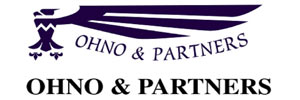
OHNO & PARTNERS
21/F Marunouchi Kitaguchi Building
1-6-5, Marunouchi, Chiyoda-ku
Tokyo – 100-0005, Japan
Email: ohnos@oslaw.org
Tel: +81 3 5218 2331
TAIWAN
The current Taiwan Patent Act is the 2013 version. There have been several revisions over the years, but the structure of the examination system has remained largely the same. However, the Taiwan Intellectual Property Office (TIPO) will embrace enormous changes after a draft amendment enters the parliament. In the draft, 40 articles are revised, 29 added, and seven deleted, marking the largest change to the patent system since 2013.
Modelling the Patent Trial and Appeal Board and Trademark Trial and Appeal Board of the US Patent and Trademark Office, as well as counterpart offices in mainland China, South Korea, Japan and Germany, the TIPO plans to establish a new patent appeal and dispute review committee (this is the tentative name, as the official title in English has not yet been announced).
The committee will be primarily vested with jurisdiction over, among other matters, the succeeding reviews of the first decision of application examinations and patent invalidations, respectively.
COMMITTEE’S FUNCTION AND ORGANISATION
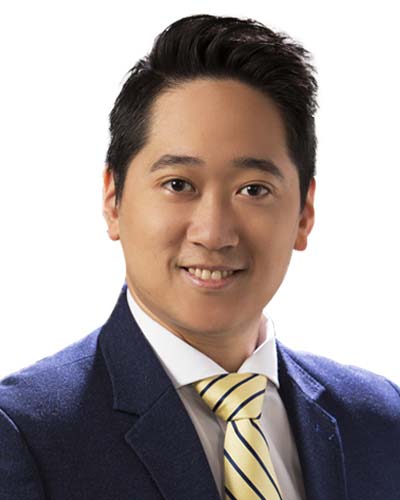
Associate Patent Attorney
Tsai Lee & Chen, Taipei
The “re-examination” after the first examination of a patent application will be abolished, and be replaced by “patent appeal” proceedings. In addition to the review of a rejected application, the patent appeal further deals with applications for patent term extension, post-grant amendments and other procedural decisions of the TIPO.
During a patent appeal proceeding, filing a divisional application remains possible. In addition to the pendency of the first examination, and three months from the allowance, the applicant is allowed to file for divisional applications during the pendency of the appeal, either before a rejection decision is issued or within three months if it is an allowance decision.
Dispute resolution, the other half of the committee’s main functions, will address cases of patent invalidity and patent term extension invalidity. The former refers to the cancellation of one or several patent claims, while the latter refers to the cancellation of an erroneous grant of a particular duration of extended patent term.
A panel of three to five ex officio members, who are patent examiners or officers of legal expertise with litigation experience, will review each case. Recusals of the panel members due to existing or potential conflicts of interest will be administered. For example, examiners who previously rejected the application in the first examination will not be allowed to participate as the case migrates to the phase of patent appeal.
Furthermore, the intervention of a third party is possible in a patent appeal or dispute case. A party having legal interests as to the conclusion of a case, such as a licensee or an assignee, may request or be ordered by the committee to participate in the proceedings of a case if necessary.
APPEAL, DISPUTE RESOLUTION
After a rejection, the applicant may request a patent appeal within two months following the decision. Before advancing to a panel review, there is a “preliminary review” step when there is a set of amended claims proposed alongside the appeal request. The preliminary review, which is similar to those of the Japan Patent Office, the Korean IP Office and the China National IP Administration, is devised for improved efficiency.
In a case where the applicant concedes to the examiner’s rejection reasons by further narrowing patent claims accordingly, it will be presided over by the same previous examiner. As the same examiner best understands the history of an application thoroughly, it is expected that a rejected application would be more quickly reversed as a result of a consensual compromise.
On the other hand, rejected applications that are appealed without claim amendments will enter panel reviews straight as per the default process.
As for invalidations, a major change will be the adoption of an adversarial system, under which the confronting opponents will no longer be the invalidating party versus the TIPO. Instead, an invalidation proceeding will be organised like a tribunal between the invalidating party and the patentee, with the TIPO’s committee serving as the neutral adjudicator.
Invalidations will require oral hearings by default, in contrast to examination by documents only as at present. A party’s absence from an oral debate without presenting justifiable excuses may lead to a decision based on unilateral arguments. When necessary, the panel may produce a case review schedule that contains issues on the facts, law, evidence and an agenda timeline. Moreover, the panel members are allowed to advise interim opinions before a decision is made.
In an invalidation case, the patentee is permitted to narrow the scope of patent right as a defensive measure in response to challenges. But the changes of a patent claim sometimes cause confusion as to which version is the latest to be reviewed against invalidity evidence. Under the draft, the review panel may first issue an interim decision that adjudicates the claim amendment. A decision on claim validity will be made later. After an interim decision, no more new, or combinations of, evidence or another claim amendment will be acceptable.
PATENT REMEDY IN THE COURT
Reduction of remedial levels is one of the major goals in the reform. For either patent appeal or dispute cases, the party may directly file a lawsuit to the Intellectual Property and Commercial Court (IPCC) on an unfavourable decision of the committee. An intermediate stage of administrative appeal in the Ministry of Economic Affairs will be removed. Eventually, the patent remedy system will consist of only two levels beyond the stage at the TIPO – the first at the IPCC, and the second at the Supreme Court.
Another major change is the governing procedural law in the court. The IPCC holds exclusive jurisdiction over patent appeal and dispute cases. To try these cases, the IPCC installs and operates the rules of civil procedures instead of administrative litigation procedures. In trials of patent appeal decisions, the TIPO becomes the defendant, while in trials of dispute decisions, the opposing party (usually the patentee) remains the defendant. In these cases, advocacy by a lawyer or patent attorney becomes compulsory.
PATENT OWNERSHIP DISPUTES
Currently a dispute as to who the real or lawful owner of a patent or application is can be resorted to either an invalidation proceeding by the TIPO or civil litigation in the court.
In several precedent cases, the courts criticised the role of an executive body to resolve the questions of ownership. The TIPO is the only specialised agency in the government that possesses expertise in IP-related matters. It has the best position to exercise its judgments on prosecutions, grants, or validity of patents.
However, speaking to the ownership of a granted patent or an invention, the TIPO as a government agency does not resemble a judicial court vested with investigatory powers. The TIPO is not the suitable organisation to resolve ownership. As per the draft, patent ownership disputes will in the future be resolved only by the court or through a settlement, arbitration or other alternative dispute resolution processes.
When a dispute of ownership is pending in the court, the parties may petition for provisional injunctions (for restoring non-monetary asset post legal action) or status-quo orders (for establishing a pro tem [for the time being] legal relationship). The injunctions and orders may further be submitted to the TIPO in order to suspend any relevant proceedings activated at the TIPO accordingly.
As an ownership dispute remains ongoing, the nominal owner on the record shall not abandon the patent until a court’s judgment or alternative dispute resolution decision is finalised.
SUNSET CLAUSE
After the new Patent Act enters into effect, both pending and finalised re-examination cases shall remain governed by the old law, along with the finalised cases of post-grant amendments, patent term extensions, invalidity, utility model rejections, and other procedural decisions. Non-finalised cases remanded back from the court or Ministry of Economic Affairs to the TIPO will resume in accordance with the old law.
Non-finalised cases other than those mentioned will be subject to the new law.

TSAI LEE & CHEN
11/F 148 Songjiang Rd
Taipei – 104492, Taiwan
Tel: +886 2 2571 0150
Email: info@tsailee.com.tw































